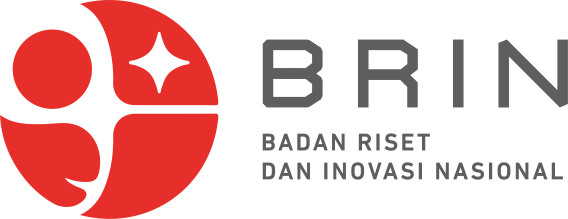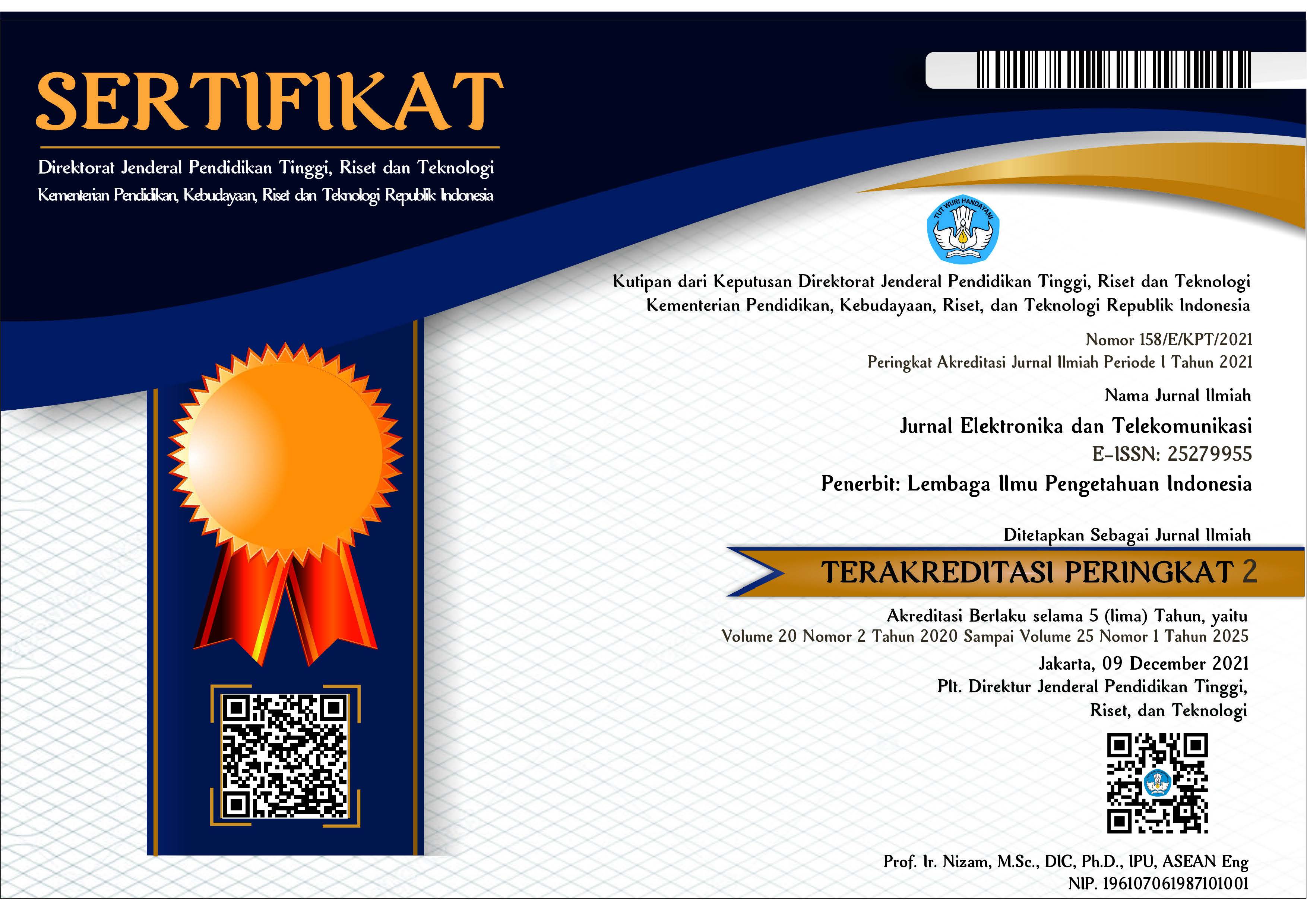Enhancing Solar Panels Efficiency: The Impact of Robotic Cleaning and Optimal Trajectory Tracking in the Presence of Disturbances Using Model Reference Adaptive Control
Abstract
The output power of photovoltaic systems (PV) can be significantly reduced by dust accumulation. Among various cleaning methods, robotic cleaning is currently the most popular choice because it minimizes human effort and reduces the risk of damaging PV cells. However cleaning robots can be impacted by various external disturbances, including wind, rain, lightning, snow, , and vibrations. Additionally, sensor errors related to slip, position, velocity, acceleration, and varying electrical parameters can also affect their performance.Several methods have been proposed in the literature for tracking the robotic cleaning trajectory of PV systems. Nevertheless, most of these methods struggle in the presence of disturbances and often have prolonged convergence times. This paper aims to propose a Model Reference Adaptive Control system to maintain optimal performance and extend the lifespan of PV panels, minimize power losses, reduce convergence time, achieve optimal tracking of the desired cleaning trajectory amidst disturbances, and decrease the dependence on multiple sensors. In our study, we utililized the iRobot solar panel developed by Aravind et al., which has a power capacity of 250 W and weighs 250 kg. This iRobot can effectively clean approximately 930 solar panels of the Kyocera Solar KC 130 GT module, which measures 1.425 m in length and 0.652 m in width. The iRobot operates for 4 hours, covering an area of 864 m², and can clean a surface area of 0.06 m² in one second. We conducted simulations using the proposed MRAC algorithm in Matlab/Simulink software, comparing the results with those obtained from a Proportional Integral Derivative (PID) algorithm. The results demonstrate that the MRAC approach achieves a shorter convergence time and greater precision in following the desired cleaning trajectory of the robot, even in the presence of disturbances, compared to the PID algorithm.
Keywords
References
S. C. S. Costa, A. S. A. C. Diniz, and L. L. Kazmerski, "Solar Energy Dust and Soiling R&D Progress: Literature review update for 2016," Renew. Sustain. Energy Rev., vol. 82. 2018. doi: 10.1016/j.rser.2017.09.015.
D. Deb and N. L. Brahmbhatt, “Review of Yield Increase of Solar Panels Through Soiling Prevention, and a Proposed Water-Free Automated Cleaning Solution,” Renew. Sustain. Energy Rev., vol. 82, no. April, pp. 3306–3313, 2018, doi: 10.1016/j.rser.2017.10.014.
V. M. Mbachu, A. G. Muogbo, O. S. Ezeanaka, E. O. Ejichukwu, and T. D. Ekwunife, “An Economic Based Analysis of Fossil Fuel Powered Generator and Solar Photovoltaic System as Complementary Electricity Source For a University Student’s Room,” J. Sol. Energy Res., vol. 7, no. 4, pp. 1159–1173, 2022, doi: 10.22059/jser.2021.332724.1225.
G. Aravind, G. Vasan, T. S. B. G. Kumar, R. N. Balaji, and G. S. Ilango, “A Control Strategy for an Autonomous Robotic Vacuum Cleaner for Solar Panels,” Proc. - 2014 Texas Instruments India Educ. Conf. TIIEC 2014, pp. 53–61, 2017, doi: 10.1109/TIIEC.2014.018.
Mircea Neagoe and Bogdan Burduhos, “Comparative Performance Analysis of Solar Tracking System Types at Different Latitudes,” J. Sol. Energy Res. Updat., vol. 8, no. March 2021, pp. 1–10, 2021, doi: 10.31875/2410-2199.2021.08.1.
H. Babazadeh and S. Javan, “Solar Panel Efficiency Enhancement using Water Filter,” J. Sol. Energy Res., vol. 6, no. 4, pp. 883–886, 2021.
S.D. Farahani, M. Alibeigi, “Investigation of Power Generated From a Pvt-Teg System in Iranian Cities” J. Sol. Energy Res., November, 2020, doi: 10.22059/JSER.2020.308162.1170.
N. Ghaffarzadeh and A. Azadian, “A Comprehensive Review and Performance Evaluation in Solar (Pv) Systems Fault Classification and Fault Detection Techniques,” J. Sol. Energy Res., vol. 4, no. 4, pp. 252–272, 2019, [Online]. Available: https://jser.ut.ac.ir/article_74001.html
B. Mehimmedetsi and R. Chenni, “Modelling of DC PV System with MPPT,” Proc. 2015 IEEE Int. Renew. Sustain. Energy Conf. IRSEC 2015, no. December 2015, 2016, doi: 10.1109/IRSEC.2015.7455013.
R. Martinez-Guerra and J. De Leon-Morales, “On Nonlinear
Observers,” IEEE Conf. Control Appl. - Proc., no. July, pp. 324–328, 1997, doi: 10.1201/b10384-41.
U. Nzotcha, J. Kenfack, and M. Blanche Manjia, “Integrated Multi-Criteria Decision Making Methodology for Pumped Hydro-Energy Storage Plant Site Selection from a Sustainable Development Perspective With an Application,” Renew. Sustain. Energy Rev., vol. 112, no. May, pp. 930–947, 2019, doi: 10.1016/j.rser.2019.06.035.
Y. Ma, Y. Zhao, R. Jia, W. Wang, and B. Zhang, “Impact of Financial Development on The Energy Intensity of Developing Countries,” Heliyon, vol. 8, no. 8, 2022, doi: 10.1016/j.heliyon.2022.e09904.
IEA, “World Energy Investment 2023,https://www.iea.org/reports/world-energy-investment-2023,” 2023.
J. Kenfack, O. V. Bossou, J. Voufo, and S. Djom, “Addressing the Current Remote Area Electrification Problems with Solar and Microhydro Systems in Central Africa,” Renew. Energy, vol. 67, pp. 10–19, 2014, doi: 10.1016/j.renene.2013.11.044.
W. Huang, K. Zhou, K. Sun, and Z. He, “Effects of Wind Flow Structure, Particle Flow and Deposition Pattern on Photovoltaic Energy Harvest Around a Block,” Appl. Energy, vol. 253, no. July, p. 113523, 2019, doi: 10.1016/j.apenergy.2019.113523.
F. A. Almalki, A. A. Albraikan, B. O. Soufiene, and O. Ali, “Utilizing Artificial Intelligence and Lotus Effect in an Emerging Intelligent Drone for Persevering Solar Panel Efficiency,” Wirel. Commun. Mob. Comput., vol. 2022, 2022, doi: 10.1155/2022/7741535.
J. Farrokhi Derakhshandeh et al., “A Comprehensive Review of Automatic Cleaning Systems of Solar Panels,” Sustain. Energy Technol. Assessments, vol. 47, no. July, p. 101518, 2021, doi: 10.1016/j.seta.2021.101518.
H. Zhen-Yu et al., “Research of Control System Based on Solar Panel Cleaning Mechanism,” Int. J. Res. Eng. Sci. ISSN, vol. 4, no. 5, pp. 1–05, 2016, [Online]. Available: www.ijres.org
Z. A. Darwish, H. A. Kazem, K. Sopian, M. A. Al-Goul, and H. Alawadhi, “Effect of Dust Pollutant Type on Photovoltaic Performance,” Renew. Sustain. Energy Rev., vol. 41, pp. 735–744, 2015, doi: 10.1016/j.rser.2014.08.068.
P. R. Satpathy, S. Jena, and R. Sharma, “Power Enhancement from Partially Shaded Modules of Solar Pv Arrays Through Various Interconnections Among Modules,” Energy, vol. 144, pp. 839–850, 2018, doi: 10.1016/j.energy.2017.12.090.
A. Kasaeian, G. Nouri, P. Ranjbaran, and D. Wen, “Solar Collectors and Photovoltaics as Combined Heat and Power Systems: a Critical Review,” Energy Convers. Manag., vol. 156, no. November 2017, pp. 688–705, 2018, doi: 10.1016/j.enconman.2017.11.064.
S. Cai et al., “Parameters Optimization of the Dust Absorbing Structure for Photovoltaic Panel Cleaning Robot Based on Orthogonal Experiment Method,” J. Clean. Prod., vol. 217, pp. 724–731, 2019, doi: 10.1016/j.jclepro.2019.01.135.
H. Kawamoto and T. Shibata, “Electrostatic Cleaning System For Removal of Sand from Solar Panels,” J. Electrostat., vol. 73, pp. 65–70, 2015, doi: 10.1016/j.elstat.2014.10.011.
Y. B. Park, H. Im, M. Im, and Y. K. Choi, “Self-Cleaning Effect of Highly Water-Repellent Microshell Structures for Solar Cell Applications,” J. Mater. Chem., vol. 21, no. 3, pp. 633–636, 2011, doi: 10.1039/c0jm02463e.
S. R. Bhandari et al., “Performance Analysis of Semi-Automatic Solar Panel Cleaning System,”OCEM J. Manag. Technol. Soc. Sci., vol. 3, pp. 110–116, 2024, DOI: https://doi.org/10.3126/ocemjmtss.v3i1.62230
V. Bedge, A. More, O. Gholap, S. Maharnur, and P. Patil, “Automatic Solar Panel Cleaning Robot Using Arduino,” Int. Res. J. Mod. Eng. Technol. Sci., no. 05, pp. 5335–5337, 2024.
G. Ashwini, T. S. Ravichandran, S. R. A. S, and S. P. K, “Robot for Cleaning Solar Panels with Automated Functionality,” Int. Res. J. Eng. Technol., pp. 1552–1555, 2024.
G. Zubi, R. Dufo-López, G. Pasaoglu, and N. Pardo, “Techno-Economic Assessment of an Off-Grid PV System for Developing Regions to Provide Electricity for Basic Domestic Needs: a 2020-2040 Scenario,” Appl. Energy, vol. 176, no. 2016, pp. 309–319, 2016, doi: 10.1016/j.apenergy.2016.05.022.
P. T. K and B. P. Tushar, “Autonomous Solar Panel Cleaning Robot,” Int. J. Adv. Res. Sci. Commun. Technol., pp. 417–420, 2024, doi: 10.48175/IJARSCT-15459.
A. Chellal and A. I. Pereira, “Innovative Robot Design for Cleaning Solar Panels,” Proc. 11th Int. Conf. Simul. Model. Methodol. Technol. Appl. (SIMULTECH), pp. 264–270, 2021, doi: 10.5220/0010540102640270.
R. Kumar, P. S. Ramapraba, S. R. Kishore, and S. Jayanthi, "Automatic Solar Panel Cleaner Robot using IoT," Journal of Physics: Conference Series, vol. 1964, no. 6, p. 062084, Jul. 2021. doi: 10.1088/1742-6596/1964/6/062084.
M. Zolfaghari, S. H. Hosseinian, S. H. Fathi, M. Abedi, and G. B. Gharehpetian, “A New Power Management Scheme for Parallel-Connected PV Systems in Microgrids,” IEEE Trans. Sustain. Energy, vol. 9, no. 4, pp. 1605–1617, 2018, doi: 10.1109/TSTE.2018.2799972.
H. R. Baghaee, M. Mirsalim, and G. B. Gharehpetian, “Multi-Objective Optimal Power Management and Sizing of a Reliable Wind/PV Microgrid with Hydrogen Energy Storage Using Mopso,” J. Intell. Fuzzy Syst., vol. 32, no. 3, pp. 1753–1773, 2017, doi: 10.3233/JIFS-152372.
A. Al Shehri, B. Parrott, P. Carrasco, H. Al Saiari, and I. Taie, “Impact of Dust Deposition and Brush-Based Dry Cleaning on Glass Transmittance for PV Modules Applications,” Sol. Energy, vol. 135, pp. 317–324, 2016, doi: 10.1016/j.solener.2016.06.005.
C. Mehdipour and F. Mohammadi, “Design and Analysis of a Stand-Alone Photovoltaic System for Footbridge Lighting,” J. Sol. Energy Res., vol. 4, no. 2, pp. 85–91, 2019, doi: 10.22059/jser.2019.283926.1120.
V. Soori, A. Ketabi, and A. H. Niasera, "Control of Three-Phase Buck-Type Dynamic Capacitor Using the Model Predictive Control Method for Dynamic Compensation of the Reactive Power and Load Current Harmonics," J. Solar Energy Res., vol. 6, no. 4, pp. 898–912, 2021. doi: 10.22059/jser.2021.313910.1185.
V. Janamala, “A New Meta-Heuristic Pathfinder Algorithm for Solving Optimal Allocation of Solar Photovoltaic System in Multi-Lateral Distribution System For Improving Resilience,” SN Appl. Sci., vol. 3, no. 1, pp. 1–17, 2021, doi: 10.1007/s42452-020-04044-8.
E. Najafi, R. Rajabi, and N. Bayat, “Fault Tolerant Multilevel Inverter using Artificial Neural Network,” J. Sol. Energy Res., vol. 9, no. 1, pp. 1745–1752, 2024, doi: 10.22059/jser.2024.359461.1309.
H. A. Van Essen and H. Nijmeijer, “Non-Linear Model Predictive Control for Constrained Mobile Robots,” 2001 Eur. Control Conf. ECC 2001, pp. 1157–1162, 2001, doi: 10.23919/ecc.2001.7076072.
H. Y. Liu, “Design and Implementation of an Intelligent Cleaning Robot Based on Fuzzy Control,” Adv. Mater. Res., vol. 1003, pp. 221–225, 2014, doi: 10.4028/www.scientific.net/AMR.1003.221.
G. Vachtsevanos, "Large-Scale Systems: Modeling, Control, And Fuzzy Logic: Mohammad Jamshidi; Prentice-Hall PTR, Englewood Cliffs, NJ, 1997, ISBN 0-13-125683-1," Automatica, vol. 37, pp. 1500–1502, Jan. 2001.
F. Fang, “Design and Research of Cleaning Robot Based on Isc Algorithm,” Acad. J. Manuf. Eng., vol. 17, no. 4, pp. 46–51, 2019.
L. Zhou and W. Li, “Adaptive Artificial Potential Field Approach for Obstacle Avoidance Path Planning,” Proc. - 2014 7th Int. Symp. Comput. Intell. Des. Isc. 2014, vol. 2, no. 1, pp. 429–432, 2015, doi: 10.1109/ISCID.2014.144.
B. Belobomevo, M. R. Saad, and R. Fareh, “Adaptive Sliding Mode Control of Wheeled Mobile Robot With Nonlinear Model And Uncertainties,” Can. Conf. Electr. Comput. Eng., vol. 2018-May, no. January, pp. 1–5, 2018, doi: 10.1109/CCECE.2018.8447570.
V. Sathiya, M. Chinnadurai, S. Ramabalan, and A. Appolloni, “Mobile Robots and Evolutionary Optimization Algorithms for Green Supply Chain Management in a Used-Car Resale Company,” Environ. Dev. Sustain., vol. 23, no. 6, pp. 9110–9138, 2021, doi: 10.1007/s10668-020-01015-2.
A. Diabat, D. Kannan, M. Kaliyan, and D. Svetinovic, “An Optimization Model for Product Returns Using Genetic Algorithms and Artificial Immune System,” Resour. Conserv. Recycl., vol. 74, pp. 156–169, 2013, doi: 10.1016/j.resconrec.2012.12.010.
D. W. Clarke, “Adaptive Control.,” Ind Digit. Control Syst, vol. 48, no. 5, pp. 190–220, 1986, doi: 10.31399/asm.hb.v16.a0002175.
Y. A. Mindzie, J. Kenfack, V. Joseph, U. Nzotcha, D. M. Djanssou, and R. Mbounguen, “Dynamic Performance Improvement using Model Reference Adaptive Control of Photovoltaic Systems Under Fast-Changing Atmospheric Conditions,” Int. J. Photoenergy, vol. 2023, 2023, doi: 10.1155/2023/5703727.
S. A. Frank, “Adaptive Control,” SpringerBriefs Appl. Sci. Technol., pp. 85–89, 2018, doi: 10.1007/978-3-319-91707-8_11.
A. O. Ignat’ev, “On The Existence of Lyapunov Functions In Problems of Stability of Integral Sets,” Ukr. Math. J., vol. 45, no. 7, pp. 1031–1041, 1993, doi: 10.1007/BF01057450.
Article Metrics
Metrics powered by PLOS ALM
Refbacks
- There are currently no refbacks.
Copyright (c) 2024 National Research and Innovation Agency

This work is licensed under a Creative Commons Attribution-NonCommercial-ShareAlike 4.0 International License.
























